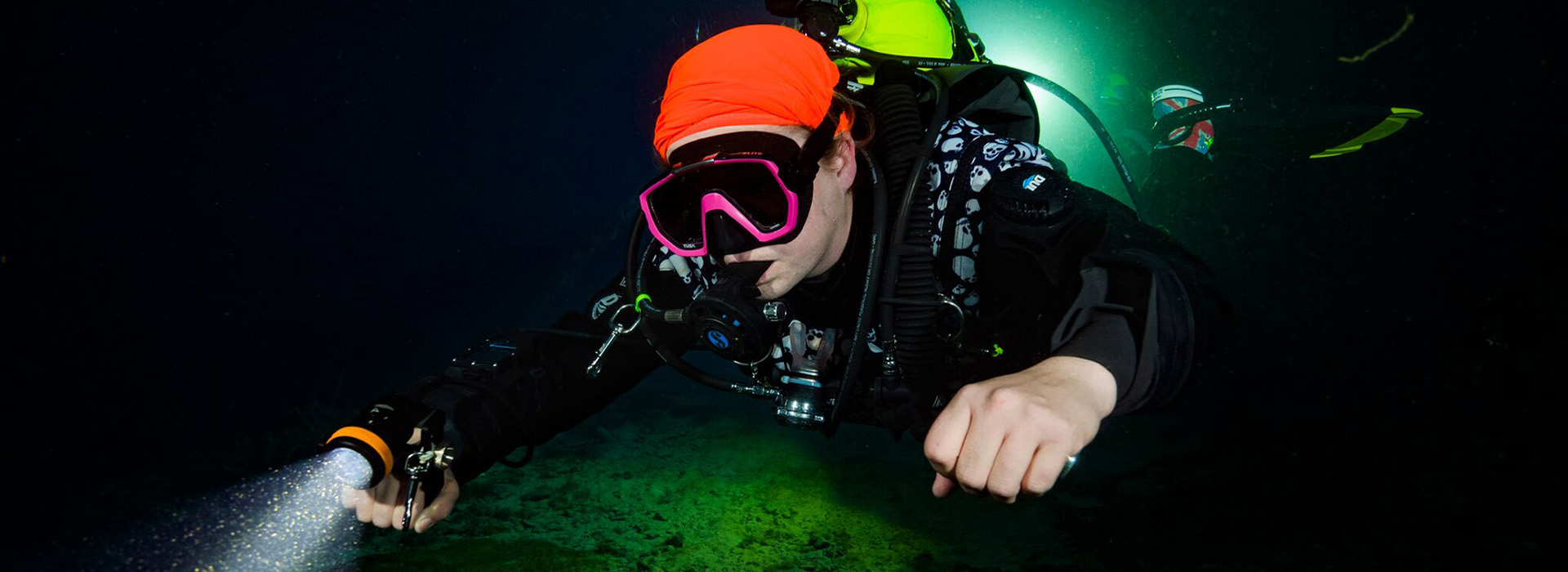15 Tips for Avoiding Seasickness
BY SELENE YEAGER
Media Reports
Why do scuba divers get motion sickness? It's because your feet are telling your brain that you're on solid ground, but you're really rocking and rolling on the high seas. Your brain gets confused; you get sick.
Anyone who's ever tried to keep their cookies settled while riding on a turbulent sea knows Kermit speaks the truth: It's not easy being green. But it's the rare ocean traveler who's never turned the sickly shade. Nearly 100 percent of boat passengers will experience some level of seasickness on rough waters, says the Centers for Disease Control, and some of us seem to get green around the gills 100 percent of the time, regardless of the motion of the ocean.
If you’re one of the unlucky 100 percent, you can blame your parents, as it’s likely genetic. Fortunately, you don’t have to abandon ship. Motion sickness and the many factors that affect it can be largely controlled. Here’s how:
1. Look up and out. At the most basic level, seasickness is a matter of sensory mismatch. When you're sitting on a boat that's rolling on the water, the body, inner ear and eyes all send different signals to the brain. Your brain gets confused and you get queasy. Stop tinkering with your computer and equipment and look out on the horizon, which usually appears very stable. Your peripheral vision will see the ocean swells that you feel. The whole picture will make more sense to your brain. Likewise brace yourself at the center of the boat where the rocking and rolling is less amplified.
2. Tame your tummy. Have a Coke. It contains phosphoric acid and sugars, the same ingredients you'll find in Emetrol, an over-the-counter anti-nausea drug.
3. Apply some pressure. For centuries, traditional Chinese medicine has included acupuncture or acupressure on the inside of the wrist, at a spot called P6, as a way to suppress the nausea associated with motion sickness. You can find simple pressure bands like Sea-Band and Acuband at your local drug store. More sophisticated, battery-operated bands like Reliefband, which delivers an electrical pulse instead of pressure, are out there as well.
4. Pop a pill. Meds like Dramamine, Bonine and even antihistamines like Benadryl can help quell motion sickness by blocking sensory-nerve transmission, which is a fancy way of saying they interrupt the flow of information from various places like the middle ear (involved in balance) to the brain. They can cause drowsiness and fuzzy thinking, however, so definitely take them for a test drive before diving on them. All the pills are about the same in effectiveness and side effects. But if one of them—Dramamine, Bonine, Marazine, etc.—seems to work better for you than the others, stick with it. The placebo effect is very strong with seasickness. And start taking the medication early: Pills are better prevention than treatment. After you feel queasy, it may be too late for pills to help, so start 12 to 24 hours before going to sea. This builds up a level of the drug in your body.
5. Try wearing an anti-nausea band. Some people like "Sea Bands." They are bracelets with dots that purportedly touch acupressure points on your wrist. They have never been proven effective, but some people swear by them.
6. Wear a patch. Scopolamine, a drug that reduces the activity of nerve fibers in your inner ear, is hands down the most successful commercial seasickness medication on the market. You get a steady dose by wearing a medicated patch like the Transderm Scop patch behind your ear. Just be mindful of following directions and watching for side effects like dry mouth and blurred vision.
7. Don't try to read. Focusing your eyes on an apparently stationary target makes them even more convinced that your middle ears are wrong.
8. Close your eyes. You may have to go below or find a place to stretch out and lie down, in which case you should close your eyes so they aren't giving a no-motion message to your brain.
9. Be clean and sober. Even a mild hangover can easily degenerate into seasickness, besides increasing various diving risks. Likewise, fatigue predisposes you to seasickness.
10. Eat something. Opinions vary on this one, but most people feel better with a little bland food on their stomachs. Bread, bagels, pancakes, etc. are better than eggs and bacon. Coffee and orange juice are acidic and may irritate your stomach. Eat a little, not a lot.
11. Relax. Anxiety contributes to seasickness. Those who are frightened by the ocean and the movement of the boat, or anxious about the diving later in the day, are more likely to become seasick.
12. Watch for symptoms. Early signs include chills, headache and frequent burping. Now is the time to go on deck, or move to the lee rail if you're already there.
13. Plan ahead. All of these techniques work best if you apply them before you need them — to prevent getting motion sick in the first place. So take precautions early. I'M SEASICK: NOW WHAT?
14. If you feel the urge, let it rip. You'll feel better almost immediately. Prolonging the inevitable only prolongs the pain.
15. Don't use a toilet. Or, God help us, a trash can. Go to the rail on the lee (downwind) side or use a bucket if one is designated. If you feel the urge coming, ask a crew member where to go. He or she will know the best place. Don't be embarrassed; you're not the first.
After a few hours, most people feel better. For some it takes a day or two. Almost everyone gets over seasickness within three days.
BY SELENE YEAGER
